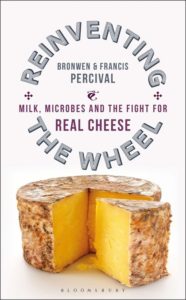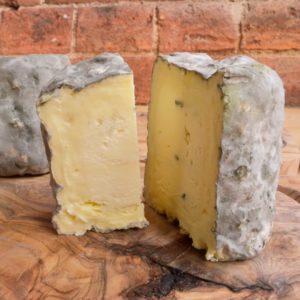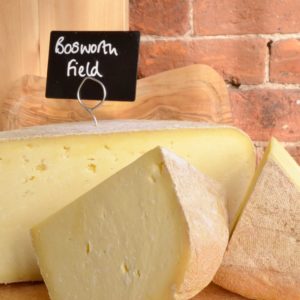
New year. New cheese.
Now that the Silly Season is behind us, we can get back on with the serious business: Cheese of the Week.
For Christmas, Mrs. Cheese bought me a copy of “Reinventing the Wheel: Milk, Microbes, and the Fight for Real Cheese”, by Bronwen and Francis Percival. The authors argue for Proper Cheese: shortening the distance between dairy farming and cheesemaking, and removing fertilizers, pasteurization, and microbial cultures from the process. Such practices are common today; there’s no need for any of them. Each changes the taste of the cheese, and takes it further from the environment in which it is fashioned.

This week’s cheese is a Red Leicester. Until now we’ve only stocked Thomas Hoe Aged Red Leicester (recently rebranded as Rutland Red). Customers love it: supermarket Leicesters are poor, and here was one they could really taste. But Thomas Hoe doesn’t satisfy the Percivals’ definition of Real Cheese: their maker, Long Clawson combines milk from 43 farms, beigeing the flavour.
This week’s cheese is not beige. Sparkenhoe is made by David and Jo Clarke of the Leicestershire Handmade Cheese Co. on their farm in Upton. Unpasteurised milk from the previous day’s milking is used in an old recipe, traditional animal rennet is added, and traditional plant dye annatto used, to give the cheese its rich orange colour. The cloth-bound cheeses are matured for six months, giving it a nutty flavour with a citrus finish. It’s fab, come give it a try.





